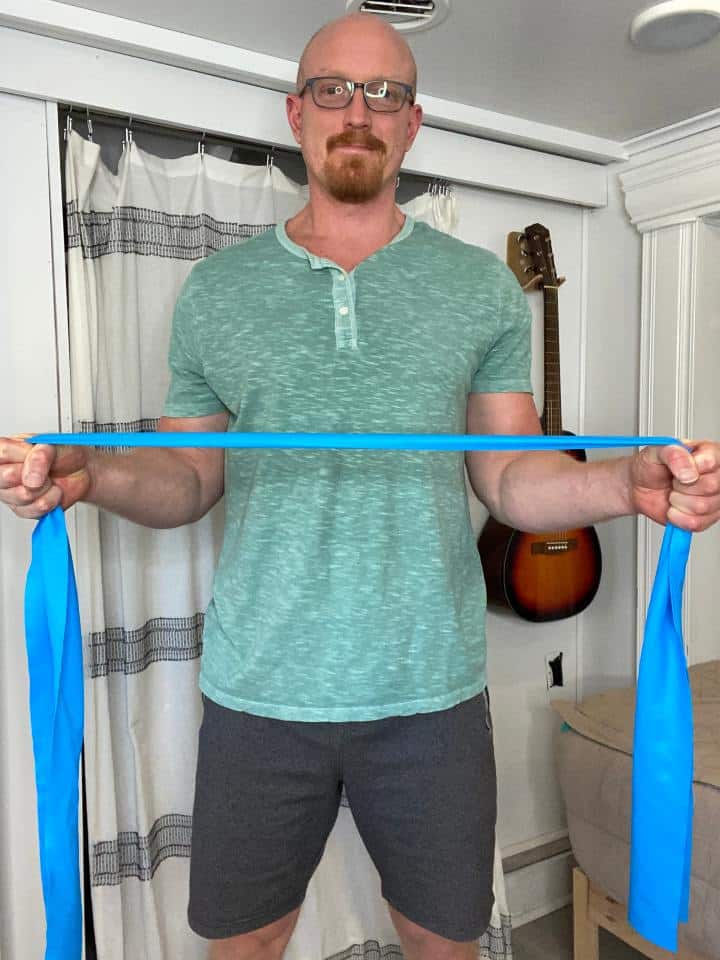Free download: Top 10 Natural & Easy Remedies for Joint Pain from Home. Learn these helpful remedies.
Estimated Reading Time: 7 minutes read
Shoulder pain caused by overuse is a prevalent condition that can affect anyone, especially those who engage in activities that require repetitive shoulder movements. Addressing this issue early is essential, as it can lead to a faster recovery and prevent long-term complications.
This article aims to shed light on effective strategies for alleviating shoulder pain through targeted exercises, emphasizing the importance of exercise as a potent tool for pain relief and shoulder health restoration.
The first step towards recovering from shoulder overuse and improving daily functioning is to understand its mechanics. By incorporating simple yet effective exercises into your daily routine, you can significantly enhance shoulder strength and flexibility, leading to lasting pain relief.
Table of Contents
Causes and Symptoms of Shoulder Overuse
Before diving into the exercises, it’s crucial to understand the underlying causes and symptoms associated with shoulder overuse. This knowledge will not only help in identifying the problem but also in tailoring the exercise regimen to address specific issues.
Causes:
- Repetitive motion
- Lack of proper rest between physical activities
- Incorrect posture during activities
- A sudden increase in activity level
- Inadequate warm-up and stretching before exercise
- Aging-related wear and tear
Symptoms:
- Persistent pain in the shoulder area
- Swelling and tenderness around the shoulder
- Reduced range of motion
- Difficulty performing overhead activities
- Stiffness in the shoulder joint
- Weakness in the arm or shoulder
Understanding these causes and symptoms is crucial for anyone looking to alleviate shoulder pain effectively. It’s not just about treating the pain but also addressing the root causes to prevent future issues.
Stage 1: Isometric Exercises for Shoulder Overuse
Isometric exercises are a gentle way to start strengthening your shoulder without causing additional strain. These exercises involve muscle contractions without movement, making them ideal for the initial stages of pain management and recovery.
1. Isometric Shoulder Extension
- Stand with your back against the wall, ensuring your elbow is bent at a 90-degree angle.
- Gently press the back of your elbow into the wall, gradually increasing the pressure for 5 seconds.
- Start with about 50-60% of your maximum strength, considering your pain levels. Avoid pressing too hard if you experience cramping or a significant increase in pain.
- Repeat the exercise eight times, focusing on activating the muscles in the back of your shoulder and arm.

2. Isometric Shoulder Flexion

- Stand facing the wall with your elbow bent at a 90-degree angle.
- Gently press your fist into the wall, gradually increasing the pressure to approximately 50-60% of your maximum strength.
- Hold this position for 5 seconds, focusing on the activation of the muscles in the front of your shoulder and arm.
- Repeat the exercise eight times, maintaining proper form and control throughout each repetition.
3. Isometric Shoulder External Rotation
- Stand in a door frame with your elbow bent at a 90-degree angle.
- Place the back of your hand against the door frame, focusing on the area just above your wrist.
- Gently press the back of your hand into the door frame, gradually increasing the pressure to approximately 50-60% of your maximum strength.
- Hold this position for 5 seconds, concentrating on activating the muscles responsible for external rotation.
- Repeat the exercise eight times, feeling the muscles engage on the outside of your arm and shoulder.

4. Isometric Shoulder Internal Rotation

- Stand in front of a door frame with your elbow bent at a 90-degree angle.
- Place the palm of your hand against the door frame, focusing on the area just above your wrist.
- Gently press the palm of your hand into the door frame, gradually increasing the pressure to approximately 50-60% of your maximum strength.
- Hold this position for 5 seconds, concentrating on activating the muscles responsible for internal rotation.
- Repeat the exercise eight times, feeling the muscles engage on the inside of your shoulder and arm.
These exercises help stabilize the shoulder joint and build strength in the muscles surrounding the shoulder, offering relief from pain and improving functionality.
Stage 2: Strengthening Exercises with Resistance Bands
As your shoulder begins to heal and regain strength, incorporating resistance band exercises can further enhance muscle endurance and strength. Resistance bands provide controlled resistance, which is essential for the safe and effective strengthening of the shoulder muscles.
1. Rows


- Hold on to the ends of a resistance band (light, medium or heavy), which you can attach to a door knob.
- Begin with the arms elevated in front of you to shoulder height and the palms facing each other.
- Step back far enough that the resistance bend has a little tension.
- Pull back on the band by bending the elbows and swinging the arms back next to you. Make sure to squeeze the shoulder blades together.
- Hold for 2 seconds, then return to your starting position.
- Repeat 10 repetitions for 3 sets.
2. External Rotation with Resistance Band


- Hold the resistance band at the point between the center and ends of the band in both hands.
- Position the elbows bent at a 90-degree angle with the upper arms tucked at your side.
- While squeezing the shoulder blades together and keeping the elbows tucked by your side, open the forearms away from your center.
- Return to your starting position.
- Repeat 10-15x for 2-3 sets.
3. Internal Rotation with Resistance Band


- This one will have to be done one arm at a time.
- Loop one end of the band around a door knob or other secure structure.
- Hold the band in the arm closest to the door or other structure the band is attached to.
- Bend the elbow 90-degrees with the upper arm tucked by your side.
- While keeping the shoulders pulled back, pull the band in towards the stomach.
- Return to your starting position.
- Repeat 10-15x for 2-3 sets.
These exercises target the key muscles involved in shoulder movement, promoting a balanced development of strength and flexibility, which is crucial for preventing future overuse injuries.
Care Tips for Shoulder Overuse
To complement your exercise routine, adopting a holistic approach to shoulder care is vital. Here are some care tips to ensure the health and longevity of your shoulder:
- Proper Warm-up: Always begin your exercise or physical activity with a proper warm-up to prepare your muscles and joints.
- Posture Awareness: Maintain good posture, especially if your work or daily activities involve prolonged periods of sitting or repetitive shoulder movements.
- Rest and Recovery: Allow adequate rest between activities that strain your shoulder to prevent overuse.
- Stretching: Incorporate stretching exercises to improve flexibility and reduce tension in the shoulder muscles.
- Gradual Increase in Activity: When engaging in new or more strenuous activities, increase the intensity gradually to give your shoulder time to adjust.
- Seek Professional Advice: If pain persists, consider consulting a healthcare professional for a tailored approach to your condition.
Conclusion
Addressing shoulder pain from overuse requires a comprehensive approach that includes targeted exercises, proper care, and an understanding of the causes and symptoms. By integrating isometric and strengthening exercises into your routine, you can effectively alleviate pain, improve shoulder function, and prevent future injuries. Remember, the key to successful recovery lies in consistency and adopting a holistic approach to shoulder health.
Embracing these practices not only helps manage shoulder overuse pain but also contributes to overall physical well-being. Whether you’re an athlete, a desk worker, or someone dealing with the challenges of aging, prioritizing shoulder health through exercise and care can lead to significant improvements in quality of life and activity levels.













